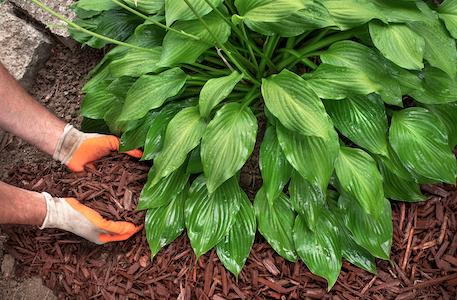
How to Select the Best Plants for Your Yard
The last weeks of summer are an excellent time to take stock of what’s growing in your yard. Which plants have made it through the long growing season and are still doing well? Are there gaps in your landscaping that you’d like to fill?
Trees, shrubs, and perennials can all be planted early in the fall when temperatures start dropping. It’s an excellent way to get new plants well-established before spring.
First and foremost, you want to invest in plants that have the best chances of surviving and thriving in your yard. That means limiting your options to species that can clear three fundamental hurdles:
1. Winter Hardiness Zones
Exposure to freezing temperatures is one of the easiest ways to kill or damage plants. That’s why it’s essential to check a plant’s hardiness rating based on USDA zones before adding it to your yard.
The USDA divides the United States into 13 10-degree F zones, with further 5-degree F divisions within each zone. Enter your zip code into the USDA Plant Hardiness Zone Map to learn your location’s average minimum winter temperature.
Then, limit your purchases to plants rated for your area or a colder/lower zone.
2. Heat Zones
Of course, it’s also true that plants well suited for cooler temperatures can experience stress if exposed to persistent heat over repeated days. The American Horticultural Society (AHS) developed a Heat Zone Map to address this concern.
According to AHS, a “heat day” is when the temperature climbs above 86 degrees F. AHS Heat Zones range from 1 (no heat days) to 12 (210 or more heat days) per year.
Since the AHS map is considerably newer, you’re less likely to encounter these ratings in garden centers and plant catalogs. But its use is growing, and gardeners should start seeing both sets of ratings more frequently.
3. Growing Conditions
In addition to heat and hardiness zones, ensure the plants you’re evaluating are well suited to the particular locations you’re considering.
Sunlight - How many hours of direct sunlight does the plant need? Will too much sunlight “burn” its leaves? Most plants fall into one or two categories: full sun, partial sun, partial shade, or full shade.
Soil - Soil consists of various particles (sand, silt, and clay) that affect drainage and multiple microorganisms that provide nutrients. For starters, consider a plant’s drainage preferences—wet, dry, or normal soil—relative to the conditions in your yard.
Water - Beyond soil drainage, you must water some plants more frequently than others. For example, drought-tolerant plants may be an ideal landscaping option for homeowners in areas with water restrictions.
Other Factors
Now that you’ve narrowed down your options, here are several more considerations:
Size - How tall and wide will the plant grow? This is one of the most straightforward factors to overlook when selecting young species, especially trees and shrubs. In addition to ensuring enough space to grow, consider how the shade it creates may impact neighboring plants.
Blooms - Flowering trees, shrubs, and perennials display their blooms on different schedules, some lasting a few days and others several weeks. And some plants will bloom a second time if you remove the spent flowers (called deadheading).
Foliage - For many gardeners, a plant’s foliage’s color, shape, and texture are at least as significant as its blooms. That’s because an attractive foliage assortment can keep a yard looking lovely throughout the growing season, with or without flowers.
Maintenance - How much time will you devote to gardening chores like pruning, watering, fertilizing, mulching, and dividing crowded plants? To minimize these tasks, select fuss-free trees, shrubs, and perennials that thrive without excessive hand-holding.
Critter resistance - Deer, rabbits, squirrels, and other pesky rodents can quickly lay waste to a favorite plant if it’s a desirable food source. You can avoid these battles by selecting varieties that are less likely to attract munchers.
Proven results - Are there certain plants that have grown exceptionally well in your yard? Consider duplicating those successful results in other spots. In addition to raising your confidence that the plant will thrive, you can create a more cohesive landscape design by repeating elements.
Fall Planting
Spring may be the most common time to add trees, shrubs, and perennials, but there are some advantages to planting in the fall. Admittedly, your local garden center’s inventory is probably slim, but you may be able to find end-of-season deals through mail-order suppliers, including potted and bare-root plants.
Fall is also the perfect time to add bulbs to your yard, ensuring you’ll enjoy a welcome crop of fresh blooms once winter has passed.
